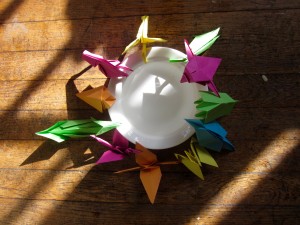This week for section, we read Farid Ud-Din Attar’s twelfth century epic poem “The Conference of the Birds.” Attar, a Persian mystic and poet, was also a perfumer and herbalist; however, he is remembered mainly for this and his other allegorical verses. The poem describes a group of thirty different birds who, led by the wise hoopoe, search for the Simorgh, a mystical bird similar to the Western phoenix. Just as Sufis- followers of the inner or esoteric aspects of Islam- read seven levels of meaning buried in each Quranic verse, the reader of this poem can perceive many dimensions of interpretation, even if she fails to immediately comprehend them in their tangle of translations. The birds seek the Simorgh for their king, perhaps a symbol for Allah or for the divine. The hoopoe describes this potential leader, “And He is always near to us, though we/ Live far from his transcendent majesty” (43). Each bird seems to represent a human flaw or characteristic inhibiting the search for the divine.



At the end of their long and difficult journey, though, they find only a lake in which their reflections together appear. Si morgh also translates directly to “thirty birds” in Persian. I choose to depict the birds at the end of their search through a small flock folded out of paper. Just as Attar carefully constructs each bird from a human foible and collection of short parables and narratives, I wanted to construct beautiful and careful, if not biologically or realistically accurate, representatives on their journey towards the divine. Though I did not fold the full collection of thirty who reach the lake, I hope the diversity of form and color represents some of the wide range of characters Attar builds and carries through his story. I arranged the birds around a small lake in a white bowl, and although their reflections are not quite visible, I hope the birds’ shadows convey the same sense of reflection and revelation. Finally, I intended the collection of birds holds to hold a form and beauty lacked by any individual, just as the “si morgh” of the story are only present in their unity.
Recent Comments